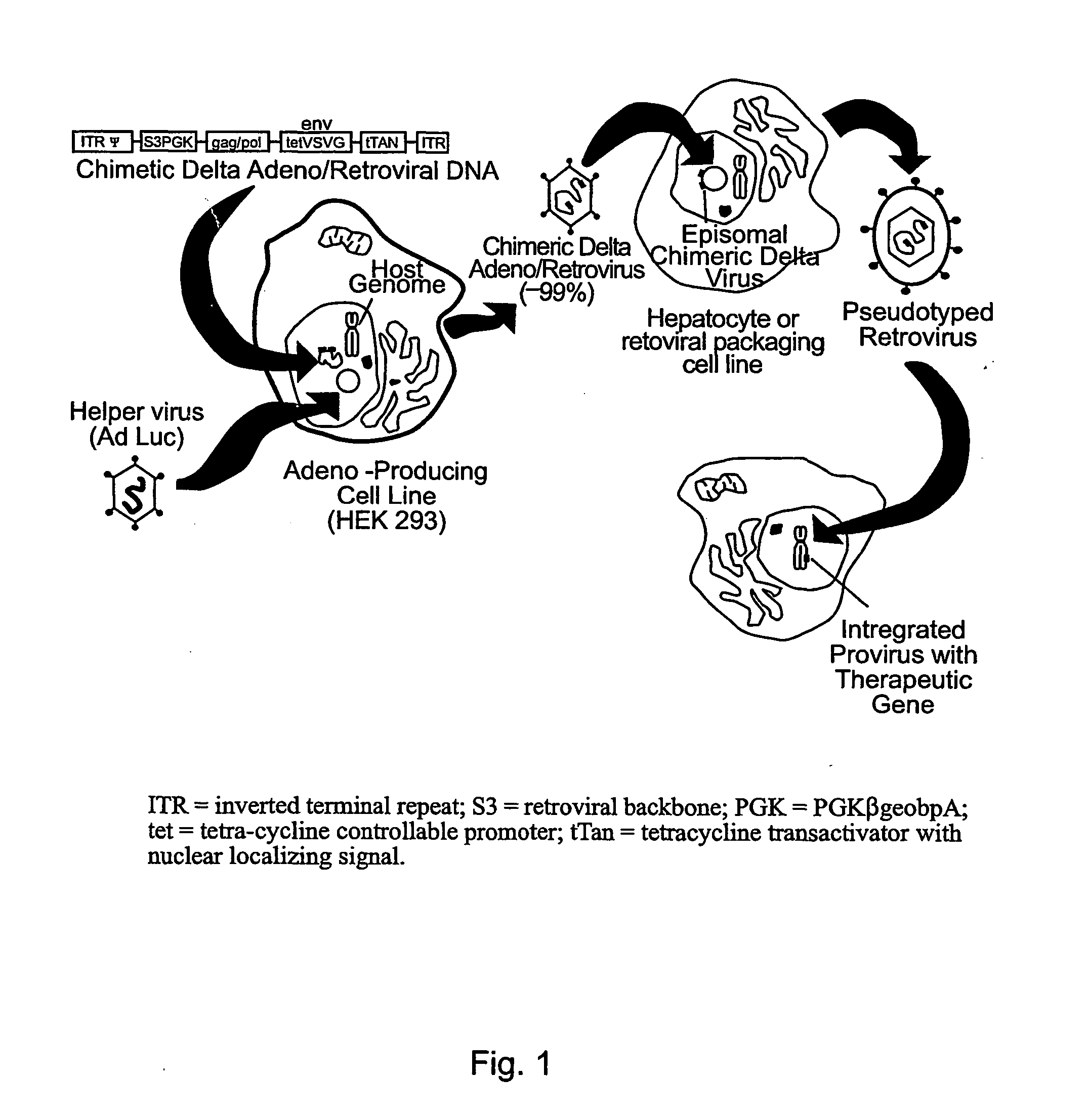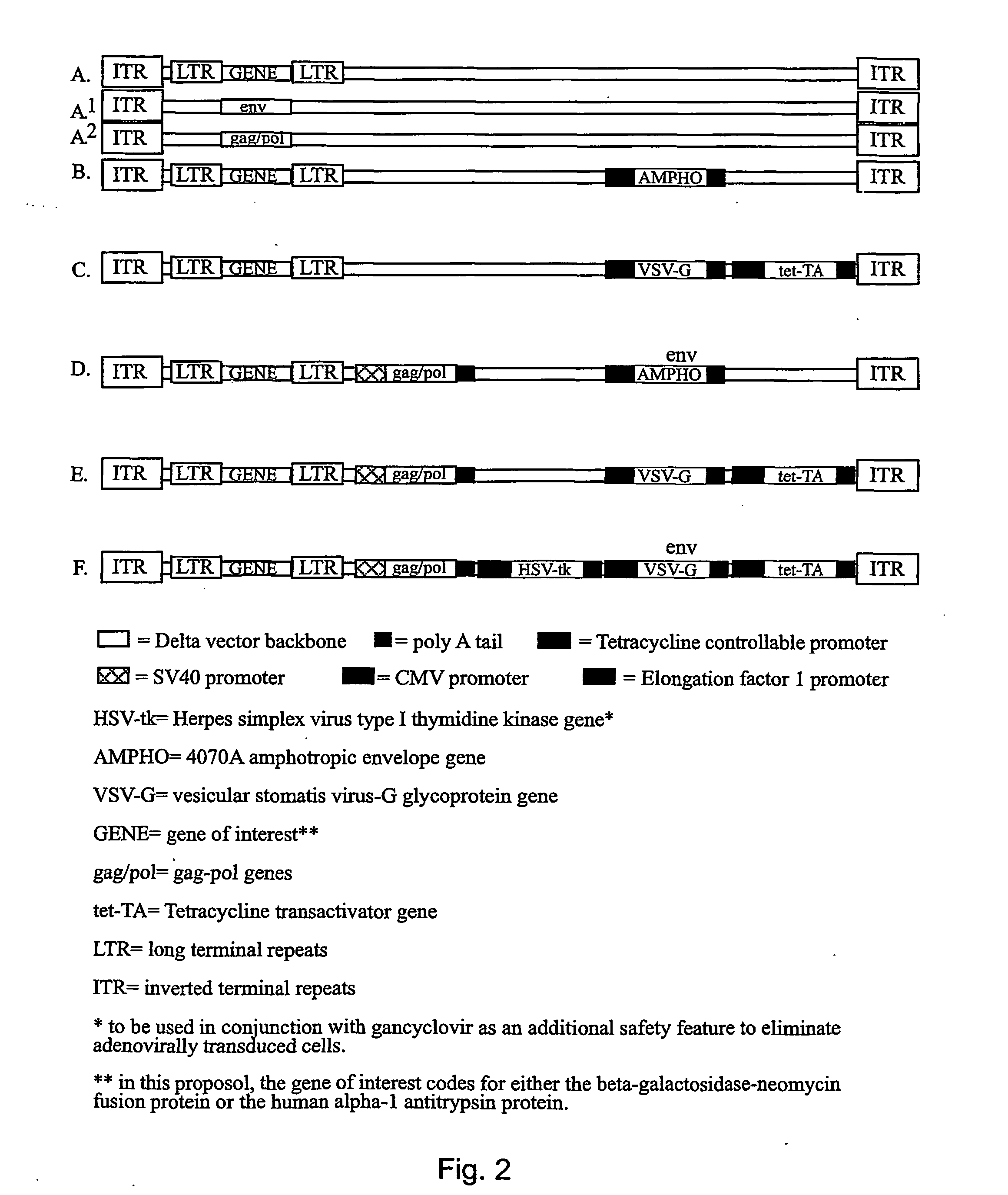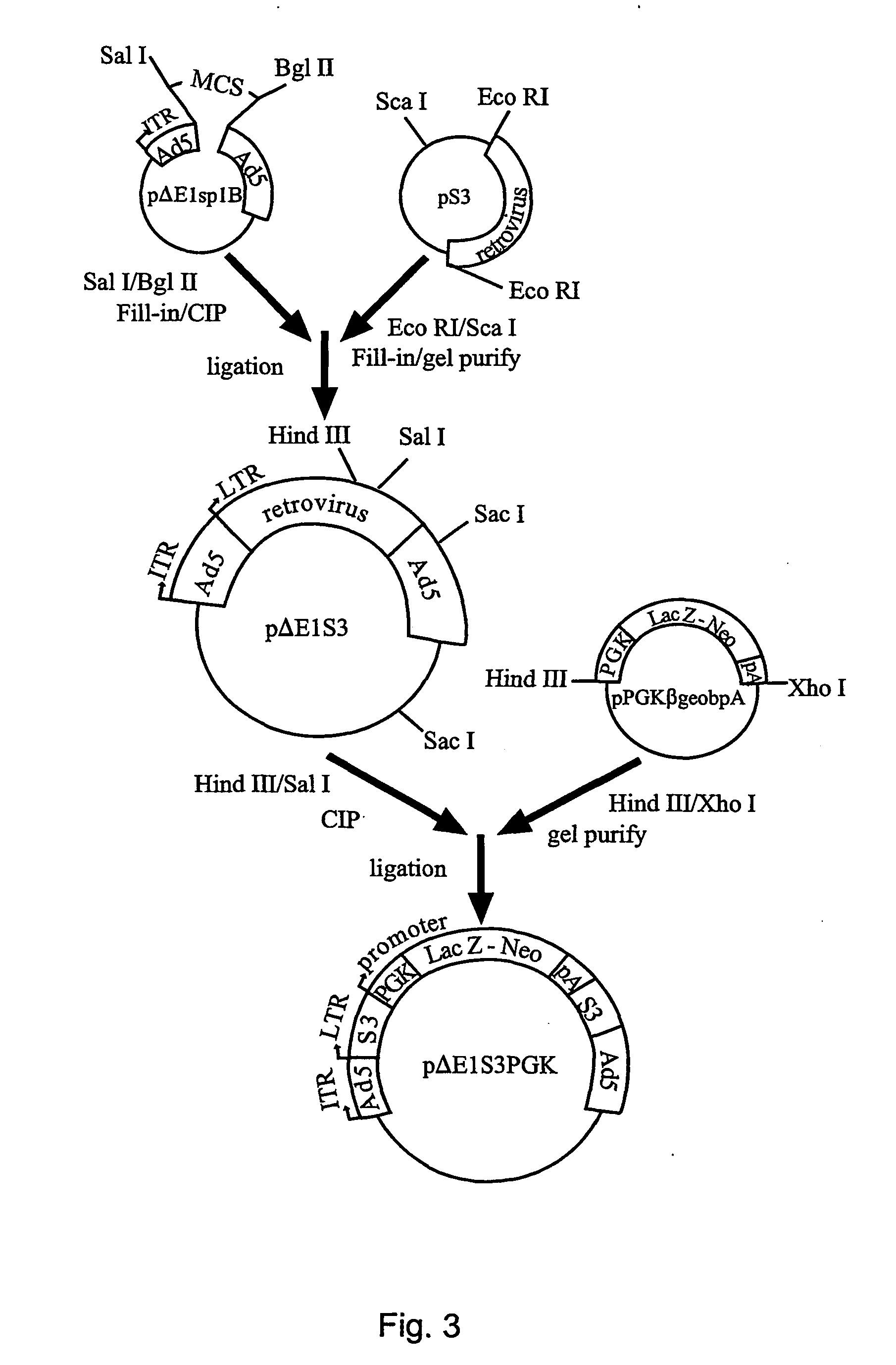Chimeric viral vectors for gene therapy
a gene therapy and vector technology, applied in the field of chimeric vectors, can solve the problems of inability of adenovirus cores to package more than 105% of the total genome size, and no curative clinical applications have been achieved
- Summary
- Abstract
- Description
- Claims
- Application Information
AI Technical Summary
Benefits of technology
Problems solved by technology
Method used
Image
Examples
example 1
Scheme for Generating a Recombinant Replication-Defective Adenoviral Vector
[0217] In a specific embodiment there is a method for generating recombinant replication-defective adenoviral vectors directed to subclone the gene of interest into the Ad5 shuttle vector pΔE1sp1B, which contains a deletion of the Ad5 E1 region.42 Although Miyake et al. (1996) describe generation of this vector, a skilled artisan is aware that the Ad5 genome is available as ATCC VR-5 from the American Type Culture Collection. As shown in FIG. 3, the minimal amphotropic Moloney murine leukemia virus (MoMuLV) backbone (S3)43 (SEQ ID NO:18)and the cassette for the phosphoglycerate kinase (PGK) promoter (SEQ ID NO:19) driving neomycin fused in-frame to the 3′ end of the lacZ gene (pPGK-βgeobpA; SEQ ID NO:20), was subcloned into pΔE1sp1B. Briefly, S3, was cut with Eco RI and ScaI, and cloned into pΔE1sp1B. The resulting plasmid was designated pΔE1S3. PGKβgeobp.A was directionally sub-cloned into S3 of pΔE1S3 form...
example 2
Testing for Inhibition of Expression of a Foreign Gene by Adenoviral Sequences
[0218] Previous studies have demonstrated that adenoviral sequences flanking a foreign insert in the E1 region may inhibit foreign gene expression.44 To test whether pΔE1S3PGK was capable of generating infectious retroviral vectors, it was stably transfected into Gp+EnvAM12 cells47, an amphotropic retroviral packaging cell line. Using the manufacturer's protocol for lipofectin (Gibco), 2 μg of pΔE1S3PGKDNA was transfected into the cells. Forty-eight hours post-transfection, normal growth media was replaced with growth media plus 400 μg / ml active G418 (Geneticin, Sigma). Isolated G418 resistant colonies were harvested 14 days post-transfection and individually placed into 35 mm plates containing normal growth media plus 400 μg / ml active G418. Each colony was further amplified and subpopulations were tested for βgalactosidase (β-gal) activity.
[0219] Colonies that expressed β-gal activity were further analy...
example 3
Infectious Retroviral Vectors are Generated from a Chimeric Adenovirus
[0221] As a preliminary experiment to demonstrate that infectious retroviral vectors are efficiently generated from a chimeric adenovirus, a replication-defective Ad5 virus purified DNA-terminal protein complex (TPC) was digested to completion with ClaI and xbaI using a modified protocol from Miyake et al.42 By individually co-transfecting the shuttle plasmids pΔE1PGK (PGKβgeobpA insert only) pΔE1PGK pΔE1S3 (empty S3 backbone), or pΔE1S3PGK (PGKβgeobpA insert in the S3 backbone) into HEK293 cells together with digested Ad5 DNA-TPC, the recombinant adenoviral vectors Ad5PGK, Ad5S3, or Ad5S3PGK were produced. Transfections were allowed to progress to 100% cytopathic effect and then amplified in a T-225 flask seeded with HEK293 cells. To initially screen the newly generated vectors for the appropriate heterologous inserts, 100 μl of each vector supernatant was individually treated with proteinase K for rapid PCR ass...
PUM
| Property | Measurement | Unit |
|---|---|---|
| diameter | aaaaa | aaaaa |
| diameter | aaaaa | aaaaa |
| nucleic acid | aaaaa | aaaaa |
Abstract
Description
Claims
Application Information
 Login to View More
Login to View More - R&D
- Intellectual Property
- Life Sciences
- Materials
- Tech Scout
- Unparalleled Data Quality
- Higher Quality Content
- 60% Fewer Hallucinations
Browse by: Latest US Patents, China's latest patents, Technical Efficacy Thesaurus, Application Domain, Technology Topic, Popular Technical Reports.
© 2025 PatSnap. All rights reserved.Legal|Privacy policy|Modern Slavery Act Transparency Statement|Sitemap|About US| Contact US: help@patsnap.com



